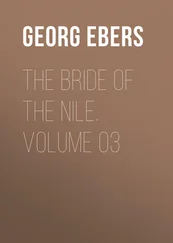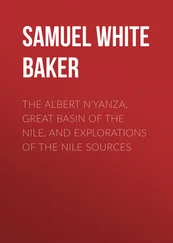Charles Warner - My Winter on the Nile
Здесь есть возможность читать онлайн «Charles Warner - My Winter on the Nile» — ознакомительный отрывок электронной книги совершенно бесплатно, а после прочтения отрывка купить полную версию. В некоторых случаях можно слушать аудио, скачать через торрент в формате fb2 и присутствует краткое содержание. Жанр: Путешествия и география, История, foreign_edu, foreign_antique, foreign_prose, на английском языке. Описание произведения, (предисловие) а так же отзывы посетителей доступны на портале библиотеки ЛибКат.
- Название:My Winter on the Nile
- Автор:
- Жанр:
- Год:неизвестен
- ISBN:нет данных
- Рейтинг книги:5 / 5. Голосов: 1
-
Избранное:Добавить в избранное
- Отзывы:
-
Ваша оценка:
- 100
- 1
- 2
- 3
- 4
- 5
My Winter on the Nile: краткое содержание, описание и аннотация
Предлагаем к чтению аннотацию, описание, краткое содержание или предисловие (зависит от того, что написал сам автор книги «My Winter on the Nile»). Если вы не нашли необходимую информацию о книге — напишите в комментариях, мы постараемся отыскать её.
My Winter on the Nile — читать онлайн ознакомительный отрывок
Ниже представлен текст книги, разбитый по страницам. Система сохранения места последней прочитанной страницы, позволяет с удобством читать онлайн бесплатно книгу «My Winter on the Nile», без необходимости каждый раз заново искать на чём Вы остановились. Поставьте закладку, и сможете в любой момент перейти на страницу, на которой закончили чтение.
Интервал:
Закладка:
Nothing more impresses the mind with the antiquity of Egypt than its vast cemeteries, into which the harvests of the dead have been gathered for so many thousands of years. Of old Memphis, indeed, nothing remains except its necropolis, whose monuments have outlasted the palaces and temples that were the wonder of the world. The magnificence of the city can be estimated by the extent of its burial-ground.
On the west side of the Nile, opposite Cairo, and extending south along the edge of the desert, is a nearly continuous necropolis for fifteen miles. It is marked at intervals by pyramids. At Geezeh are three large and several small ones; at Abooseer are four; at Sakkara are eleven; at Dashoor are four. These all belonged to the necropolis of Memphis. At Geezeh is the largest, that of Cheops or Shoofoo, the third king of the fourth dynasty, reigning at Memphis about 4235 B.C., according to the chronology of Mariette Bey, which every new discovery helps to establish as the most probably correct. This pyramid was about four hundred and eighty feet high, and the length of a side of its base was about seven hundred and sixty-four feet; it is now four hundred and fifty feet high and its base line is seven hundred and forty-six feet. It is big enough yet for any practical purpose. The old pyramid at Sakkara is believed to have been built by Ouenephes, the fourth king of the first dynasty, and to be the oldest monument in the world . Like the mounds of the Chaldeans, it is built in degrees or stages, of which there are five. Degraded now and buried at the base in its own rubbish, it rises only about one hundred and ninety feet above the ground.
It is a drive of two hours from Cairo to the Pyramids of Geezeh, over a very good road; and we are advised to go by carriage. Hadji is on the seat with the driver, keeping his single twinkling eye active in the service of the howadji. The driver is a polished Nubian, with a white turban and a white gown; feet and legs go bare. You wouldn’t call it a stylish turnout for the Bois, but it would be all right if we had a gorgeous sais to attract attention from ourselves.
We drive through the wide and dusty streets of the new quarter. The barrack-like palace, on the left of abroad place, is the one in which the Khedive is staying just now, though he may be in another one to-night. The streets are the same animated theater-like scenes of vivid color and picturesque costume and indolent waiting on Providence to which we thought we should never become accustomed, but which are already beginning to lose their novelty. The fellaheen are coming in to market, trudging along behind donkeys and camels loaded with vegetables or freshly cut grass and beans for fodder. Squads of soldiers in white uniform pass; bugle notes are heard from Kasr e’ Neel, a barrack of troops on the river. Here, as in Europe, the great business most seriously pursued is the drilling of men to stand straight, handle arms, roll their eyes, march with a thousand legs moving as one, and shoot on sight other human beings who have learned the same tricks. God help us, it is a pitiful thing for civilized people.
The banks of the Nile here above Boolak are high and steep. We cross the river on a fine bridge of iron, and drive over the level plain, opposite, on a raised and winding embankment. This is planted on each side with lebbekh and sycamore trees. Part of the way the trees are large and the shade ample; the roots going down into moist ground. Much of the way the trees are small and kept alive by constant watering. On the right, by a noble avenue are approached the gardens and the palace of Gezeereh. We pass by the new summer palace of Geezeh. Other large ones are in process of construction. If the viceroy is measured for a new suit of clothes as often as he orders a new palace, his tailors must be kept busy. Through the trees we see green fields, intersected with ditches, wheat, barley, and beans, the latter broad-sown and growing two to three feet high; here and there are lines of palms, clumps of acacias; peasants are at work or asleep in the shade; there are trains of camels, and men plowing with cows or buffaloes. Leaving the squalid huts that are the remains of once beautiful Geezeh, the embankment strides straight across the level country.
And there before us, on a rocky platform a hundred feet higher than the meadows, are the pyramids, cutting the stainless blue of the sky with their sharp lines. They master the eye when we are an hour away, and as we approach they seem to recede, neither growing larger nor smaller, but simply withdrawing with a grand reserve.
I suppose there are more “emotions” afloat about the pyramids than concerning any other artificial’ objects. There are enough. It becomes constantly more and more difficult for the ordinary traveler to rise to the height of these accumulated emotions, and it is entirely impossible to say how much the excitement one experiences on drawing near them results from reading and association, and how much is due to these simple forms in such desolate surroundings. But there they stand, enduring standards, and every visitor seems inclined to measure his own height by their vastness, in telling what impression they produce upon him . They have been treated sentimentally, off-handedly, mathematically, solemnly, historically, humorously. They yield to no sort of treatment. They are nothing but piles of stone, and shabby piles at that, and they stand there to astonish people. Mr. Bayard Taylor is entirely right when he says that the pyramids are and will remain unchanged and unapproachably impressive however modern life may surge about them, and though a city should creep about their bases.
Perhaps they do not appear so gigantic when the visitor is close to them as he thought they would from their mass at a distance. But if he stands at the base of the great pyramid, and casts his eye along the steps of its enormous side and up the dizzy height where the summit seems to pierce the solid blue, he will not complain of want of size. And if he walks around one, and walks from one to another wading in the loose sand and under a midday sun, his respect for the pyramids will increase every moment.
Long before we reach the ascent of the platform we are met by Arab boys and men, sellers of antiquities, and most persistent beggars. The antiquities are images of all sorts, of gods, beasts, and birds, in pottery or in bronze, articles from tombs, bits of mummy-cloth, beads and scarabæi, and Roman copper coins; all of them at least five thousand years old in appearance.
Our carriage is stuck in the sand, and we walk a quarter of a mile up the platform, attended by a rabble of coaxing, imploring, importunate, half-clad Bedaween. “Look a here, you take dis; dis ver much old, he from mummy; see here, I get him in tomb; one shillin; in Cairo you get him one pound; ver sheap. You no like? No anteeka, no money. How much?”
“One penny.”
“Ah,” ironically, “ket’-ther khâyrak (much obliged). You take him sixpence. Howadji, say, me guide, you want go top pyramid, go inside, go Sphinkee, allée tomba?”
Surrounded by an increasing swarm of guides and antiquity-hawkers, and beset with offers, entreaties, and opportunities, we come face to face with the great pyramid. The ground in front of it is piled high with its debris . Upon these rocks, in picturesque attitudes, some in the shade and some in the sun, others of the tribe are waiting the arrival of pyramid climbers; in the intense light their cotton garments and turbans are like white paint, brilliant in the sun, ashy in the shadow. All the shadows are sharp and deep. A dark man leaning on his spear at the corner of the pyramid makes a picture. At a kiosk near by carriages are standing and visitors are taking their lunch. But men, carriages, kiosk, are dwarfed in this great presence. It is, as I said, a shabby pile of stone, and its beauty is only that of mathematical angles; but then it is so big, it casts such a shadow; we all beside it are like the animated lines and dots which represent human beings in the etchings of Callot.
Читать дальшеИнтервал:
Закладка:
Похожие книги на «My Winter on the Nile»
Представляем Вашему вниманию похожие книги на «My Winter on the Nile» списком для выбора. Мы отобрали схожую по названию и смыслу литературу в надежде предоставить читателям больше вариантов отыскать новые, интересные, ещё непрочитанные произведения.
Обсуждение, отзывы о книге «My Winter on the Nile» и просто собственные мнения читателей. Оставьте ваши комментарии, напишите, что Вы думаете о произведении, его смысле или главных героях. Укажите что конкретно понравилось, а что нет, и почему Вы так считаете.












